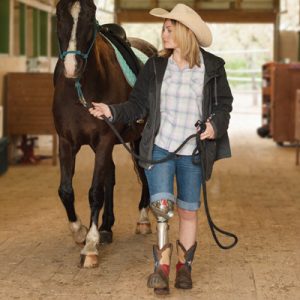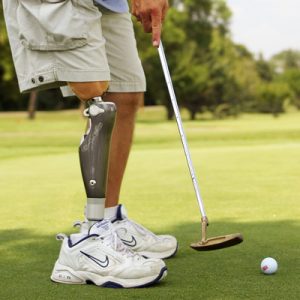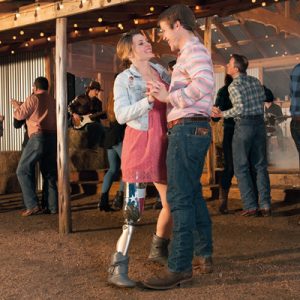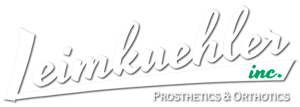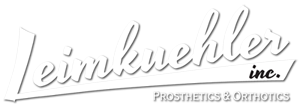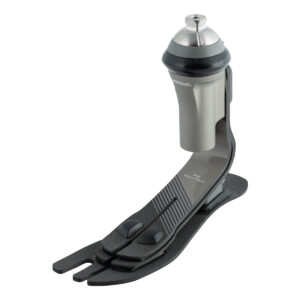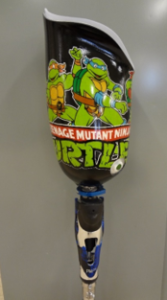What happens after amputation?
Consult with your physician, wound care, physical therapy and Leimkuehler, Inc. to plan your healing and rehabilitation process.
The prosthetic process starts with a compression garment also knows as a shrinker fit by a prosthetist. This is ordered by the physician with a prescription.
When cleared by the physician, the prosthetist from Leimkuehler will take a cast or scan and start making the prosthesis. We offer a customized socket and suspension design tailored to each patient. Components such as feet and knees are selected based on your daily activities, lifestyle, and insurance.
You will have a diagnostic fitting appointment and an alignment fitting to ensure the prosthesis fit and function is optimized.
Once completed, you will take delivery of the prosthesis and supplies such as gel liners and socks. Final adjustments and a safety check will be performed at this visit. Gait training with physical therapy is important to reach full function and mobility with the prosthesis.
Follow up visits will be necessary to maintain the prosthesis, make minor adjustments and to receive prosthetic supplies annually.
Click here to download "What Happens After Amputation" pdf.
Types of Prosthetic Devices
Transtibial or Below Knee prosthetics are the most common.
A Transtibial prosthesis consists of a socket, pylon and a foot/ankle. There are many ways to hold a prosthesis on. The most common is a gel liner worn on the residual limb.
Transfemoral or Above Knee prostheses
A Transfemoral prosthesis includes a knee joint as well as a foot/ankle. There are also a variety of knee units, foot designs and suspension options that are selected based on each patient’s needs.
Hip Disarticulation and Hemipelvectomy prostheses
A Hip disarticulation and hemipelvectomy prostheses include a hip joint, knee joint as well as a foot/ankle.
Socket Design and Suspension
We offer a variety of socket designs and types of suspension based on patient needs.
Common socket designs are PTB (Patella Tendon Bearing), Total Contact, SCSP, Quadrilateral, Modified Quadrilateral, Ischial Containment, Plug Fit, Expandable Wall, and Symes.
Suspension designs include; 3S locking (pin and lock), suspension sleeve, suction, seal in, elevated vacuum, KISS or lanyard, BOA System, cuff strap, belt, and supracondylar.
Amputee Resources
Our certified and licensed practitioners can help you through the process of getting back to your life. We provide consultations with community resources for new and existing amputees.
Peer visitation
Talking or meeting with an experienced amputee can be invaluable. We can connect you with a certified peer visitor or another amputee that uses similar prosthesis.
